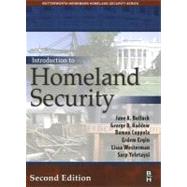
| Acknowledgments | xi | ||||
| Introduction | xiii | ||||
|
|||||
|
1 | (1) | |||
|
1 | (1) | |||
|
2 | (1) | |||
|
2 | (1) | |||
|
3 | (1) | |||
|
4 | (1) | |||
|
5 | (1) | |||
|
6 | (1) | |||
|
7 | (2) | |||
|
9 | (1) | |||
|
10 | (1) | |||
|
11 | (1) | |||
|
12 | (1) | |||
|
13 | (1) | |||
|
14 | (10) | |||
|
24 | (1) | |||
|
24 | (7) | |||
|
|||||
|
31 | (21) | |||
|
52 | (1) | |||
|
53 | (1) | |||
|
53 | (10) | |||
|
63 | (1) | |||
|
64 | (4) | |||
|
68 | (25) | |||
|
|||||
|
93 | (2) | |||
|
95 | (1) | |||
|
96 | (7) | |||
|
103 | (8) | |||
|
111 | (4) | |||
|
115 | (10) | |||
|
125 | (17) | |||
|
142 | (1) | |||
|
143 | (4) | |||
|
|||||
|
147 | (1) | |||
|
148 | (4) | |||
|
152 | (1) | |||
|
153 | (13) | |||
|
166 | (16) | |||
|
182 | (4) | |||
|
186 | (1) | |||
|
186 | (3) | |||
|
189 | (1) | |||
|
189 | (8) | |||
|
|||||
|
197 | (1) | |||
|
197 | (8) | |||
|
205 | (7) | |||
|
212 | (16) | |||
|
228 | (6) | |||
|
234 | (17) | |||
|
251 | (5) | |||
|
256 | (7) | |||
|
263 | (4) | |||
|
|||||
|
267 | (2) | |||
|
269 | (8) | |||
|
277 | (2) | |||
|
279 | (4) | |||
|
283 | (3) | |||
|
286 | (1) | |||
|
287 | (1) | |||
|
288 | (9) | |||
|
297 | (2) | |||
|
299 | (2) | |||
|
301 | (3) | |||
|
304 | (3) | |||
|
307 | (2) | |||
|
|||||
|
309 | (2) | |||
|
311 | (2) | |||
|
313 | (2) | |||
|
315 | (1) | |||
|
315 | (10) | |||
|
325 | (1) | |||
|
326 | (1) | |||
|
327 | (5) | |||
|
332 | (10) | |||
|
342 | (7) | |||
|
349 | (3) | |||
|
352 | (5) | |||
|
357 | (24) | |||
|
381 | (5) | |||
|
386 | (2) | |||
|
388 | (1) | |||
|
389 | (20) | |||
|
|||||
|
409 | (1) | |||
|
410 | (14) | |||
|
424 | (3) | |||
|
427 | (4) | |||
|
431 | (1) | |||
|
432 | (27) | |||
|
|||||
|
459 | (1) | |||
|
460 | (1) | |||
|
460 | (2) | |||
|
462 | (6) | |||
|
468 | (3) | |||
|
471 | (6) | |||
|
477 | (5) | |||
|
482 | (1) | |||
|
482 | (2) | |||
|
484 | (23) | |||
|
|||||
|
507 | (1) | |||
|
507 | (1) | |||
|
508 | (1) | |||
|
509 | (4) | |||
|
513 | (2) | |||
| Appendix 1 List of Acronyms | 515 | (4) | |||
| Appendix 2 U.S.A. Patriot Act Summary | 519 | (10) | |||
| Appendix 3 Homeland Security Act of 2002 | 529 | (20) | |||
| Appendix 4 List of State Emergency Management Offices | 549 | (6) | |||
| Appendix 5 List of State Homeland Security Contacts | 555 | (6) | |||
| Appendix 6 List of Corporation for National and Community Service (CNCS) Homeland Security Grantees | 561 | (8) | |||
| Appendix 7 Centers for Disease Control (CDC) Preparedness and Planning Information Sites | 569 | (4) | |||
| Appendix 8 Selected Websites for Additional Information | 573 | (10) | |||
| Appendix 9 Safe Conference Report | 583 | (12) | |||
| Appendix 10 California State Agency Guidance: Homeland Security Advisory System | 595 | (12) | |||
| Appendix 11 Communicating During Emergencies | 607 | (6) | |||
| Glossary of Hazard Terms | 613 | (20) | |||
| References | 633 | (4) | |||
| Index | 637 |
The New copy of this book will include any supplemental materials advertised. Please check the title of the book to determine if it should include any access cards, study guides, lab manuals, CDs, etc.
The Used, Rental and eBook copies of this book are not guaranteed to include any supplemental materials. Typically, only the book itself is included. This is true even if the title states it includes any access cards, study guides, lab manuals, CDs, etc.